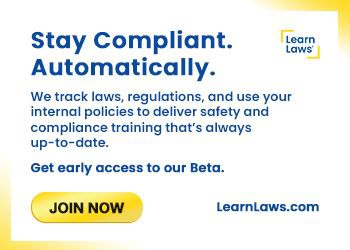Is it necessary to have two supervisors observe the impaired conduct of your employees to establish enough reasonable suspicion to have them tested for drugs or alcohol? Does split specimen testing apply to breath tests?
These are questions the U.S. Court of Appeals had to consider in International Brotherhood of Teamsters (“IBT”) v. Federal Highway Administration. In that case, IBT was challenging some regulations issued by both the Department of Transportation (“DOT”) and the Federal Highway Administration ("FHWA") (collectively, the "Secretary") governing the use of alcohol by commercial motor vehicle operators.[1]
The IBT contended that the regulations were inconsistent with the Omnibus Transportation Employee Testing Act of 1991 (“Testing Act”) due to its failure to compel that a "split specimen" sample be preserved when breath testing is employed to determine a driver's alcohol level.[2] IBT further contended that the regulations violated the Testing Act because they did not require that "reasonable suspicion" testing be based on the observations of at least two supervisors who have taken DOT Reasonable Suspicion Training.[3]
The Testing Act, which became law on October 28, 1991, required motor carriers to conduct pre-employment, reasonable suspicion, random, and post-accident alcohol testing of their drivers.[4] The Act imposed similar responsibilities on the Secretary with regard to railroad workers and mass transit workers, and on the Administrator of the Federal Aviation Administration with regard to aviation workers.[5]
The FHWA’s regulations provide that an employer shall require a driver to submit to an alcohol test when the employer has a "reasonable suspicion" that the driver has violated FHWA's substantive rules governing the use of alcohol.[6] The regulations go on to mandate that "reasonable suspicion" decisions be based on "specific, contemporaneous, articulable observations concerning the appearance, behavior, speech or body odors of the driver."[7] The observations must be made by a person trained in the indicators of substance abuse and made during, just preceding, or directly following the period in which the driver is required to be in compliance with the substantive regulations.[8]
The court considered IBT’s claim that the FHWA regulations are flawed, and determined that nothing in the statutory text unambiguously requires that two supervisors observe the behavior to give rise to "reasonable suspicion" alcohol testing.[9] The court does note that it is true that the Secretary could have provided more employee protection by requiring observations by two supervisors, as the agency's drug testing rules for motor vehicle operators did.[10] The court goes on to say, however, that it is a great leap from the notion that more protection could have been provided to the conviction that such additional protection was statutorily required.[11]
IBT further claimed that the DOT testing regulations are defective because they do not require that a "split specimen" sample be retained when alcohol testing is performed using an evidential breath testing device (“EBT”).[12] The court failed to find the statute "unambiguous" with respect to the requirement of preserving a "split specimen" in breath testing. Although the regulations call for each "specimen sample to be subdivided . . . and that a portion thereof be retained," it did not specify whether breath testing involves a "specimen sample" at all.[13] The Secretary argued that Congress designed the split specimen requirement to address "chain of custody" issues that may arise when a sample is collected and sent to a laboratory for testing, which does not occur in breath testing.[14] The court determined that the Secretary's interpretation of split specimen testing was reasonable.[15]
Although the DOT’s reasonable cause testing requirements do state that in order to require a driver to be tested “the conduct must be witnessed by at least two supervisors or company officials” it only applies “when feasible.”[16] Furthermore, in an earlier case, Skinner v. Railway Labor Executives' Association, the Supreme Court upheld against a Fourth Amendment challenge a testing regime that permitted "reasonable suspicion" determinations to be made by a single supervisor.
In this case, the court denied the petition for review because IBT failed to demonstrate that the Testing Act required that "split specimen" samples be preserved when breath testing was being used to determine an employee's alcohol level.[17] International Brotherhood of Teamsters (“IBT”) v. Federal Highway Administration reminds us that "reasonable suspicion" testing does not have to be based off the observations of at least two supervisors under what are now Federal Motor Carrier Safety Administration (FMCSA) regulations.[18] Although, you can add additional safeguards as an employer to your drug/alcohol testing requirements, it is important to be in compliance at all times with those regulations already set by the United States Department of Transportation.
We are an education company, not a law firm. The information and content we provide is for general informational purposes only and does not constitute legal advice. We make no representations, warranties, or guarantees regarding the accuracy, completeness, or applicability of the content. It is important to always consult with a qualified attorney for specific legal counsel pertaining to your individual circumstances.






